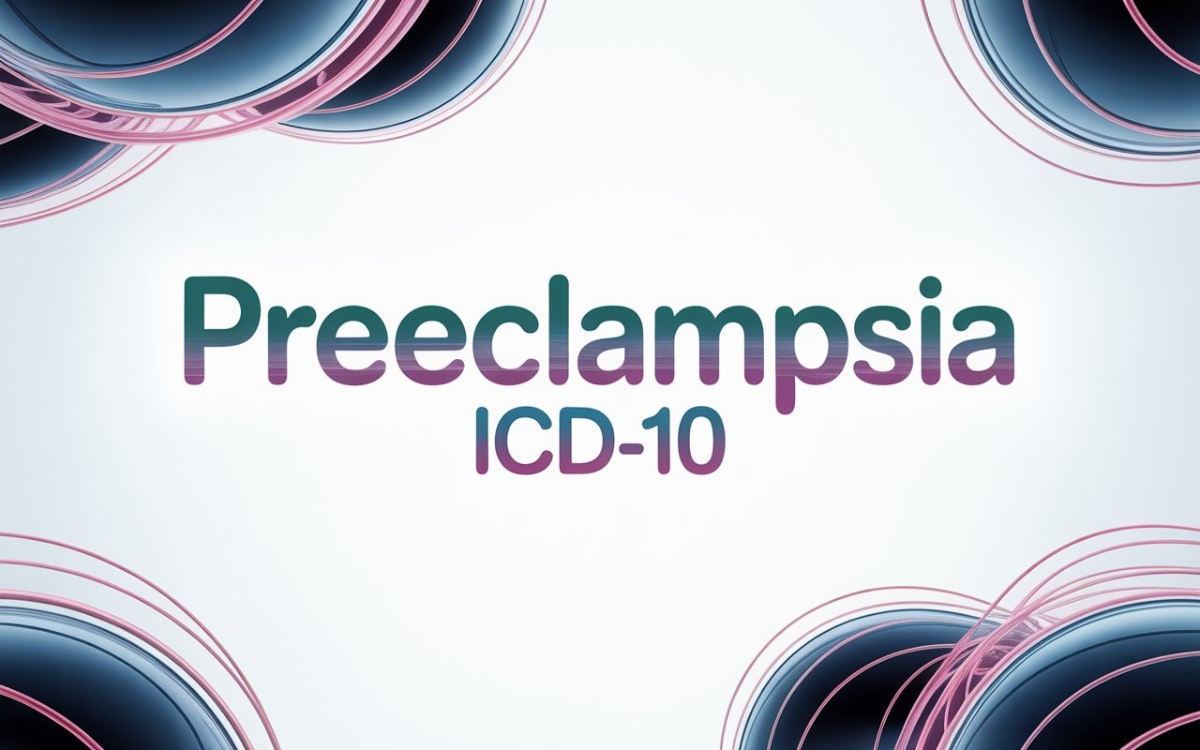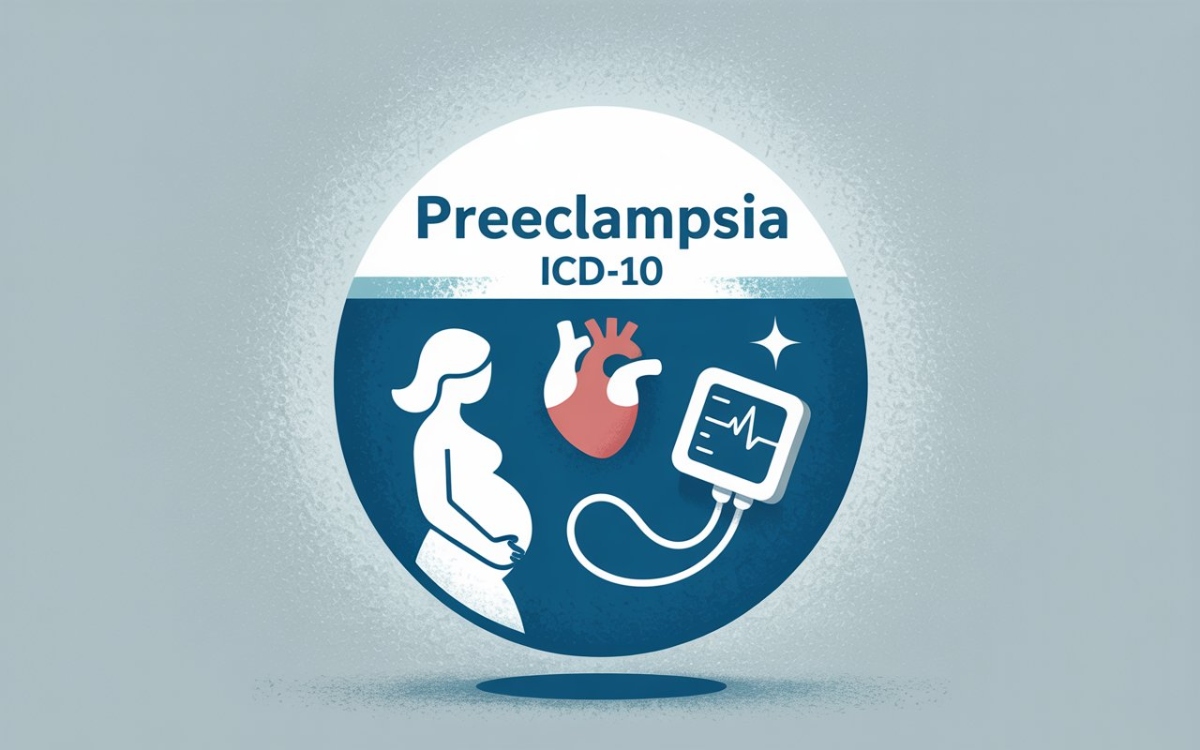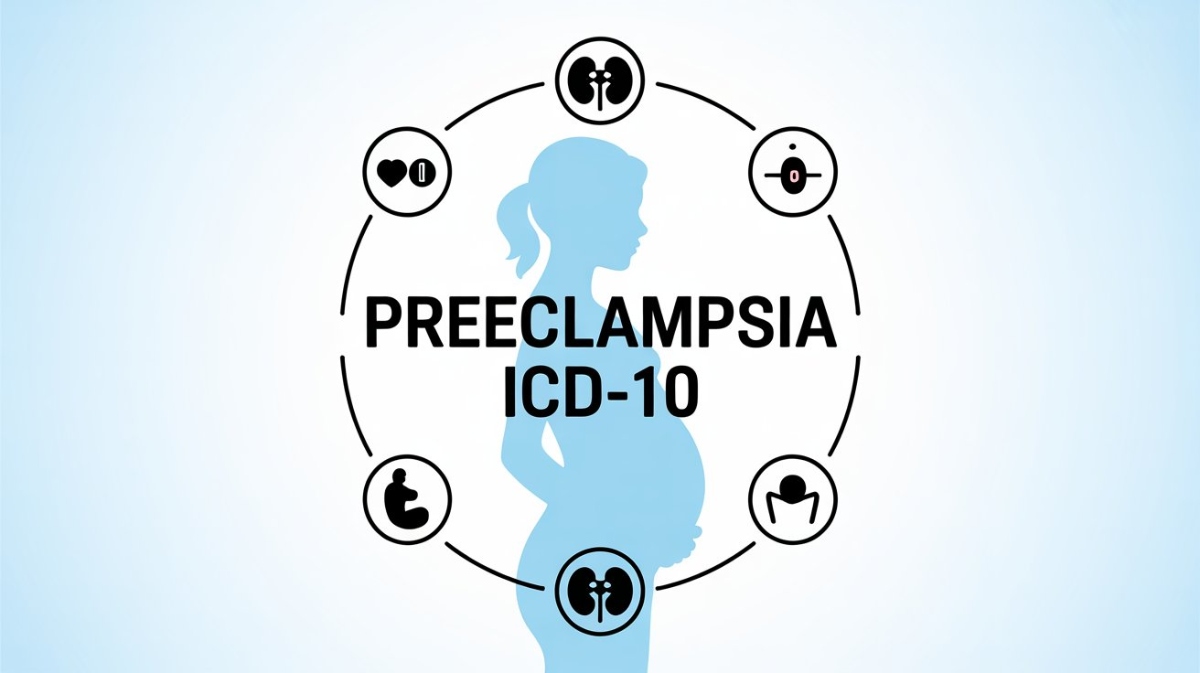Preeclampsia is more than just high blood pressure during pregnancy—it’s a potentially life-threatening condition that demands attention. Understanding the Preeclampsia ICD-10 code helps you navigate your care, communicate with providers, and advocate for early diagnosis and treatment.
Preeclampsia ICD-10 Code: The ICD-10 code for preeclampsia during pregnancy is O14, with subcodes depending on severity (e.g., O14.0 for mild-to-moderate, O14.1 for severe). Healthcare providers use this code for diagnosis, billing, and treatment documentation. Preeclampsia is a serious difficulty that can occur during pregnancy and requires immediate medical attention.
What Is Preeclampsia and Why Is It Dangerous?
 Preeclampsia is a condition indicated by high blood pressure and symptoms of organ damage, most commonly affecting the liver or kidneys, that typically develops after 20 weeks of pregnancy. If untreated, it can lead to severe—even fatal—complications for both mother and baby.
Preeclampsia is a condition indicated by high blood pressure and symptoms of organ damage, most commonly affecting the liver or kidneys, that typically develops after 20 weeks of pregnancy. If untreated, it can lead to severe—even fatal—complications for both mother and baby.
Common Symptoms of Preeclampsia:
- Persistent headache
- Vision changes (blurry or seeing spots)
- Swelling in the hands and face
- Sudden weight gain
- Upper abdominal ache (especially on the right side)
Health Tip: Always inform your provider if you notice any of the above symptoms after 20 weeks. Early diagnosis is key.
What Is the ICD-10 Code for Preeclampsia?
The ICD-10 (International Classification of Diseases), 10th Correction, is a universal coding framework healthcare professionals use to document diagnoses.
| Condition | ICD-10 Code |
|---|---|
| Mild to Moderate Preeclampsia | O14.0 |
| Severe Preeclampsia | O14.1 |
| HELLP Syndrome (variant) | O14.2 |
| Unspecified Preeclampsia | O14.9 |
How Is Preeclampsia ICD-10 Diagnosed and Treated?
Diagnosis:
Doctors may confirm preeclampsia using:
- Blood pressure readings (>140/90 mmHg on two occasions)
- Urine tests for protein (proteinuria)
- Blood tests to check liver enzymes and platelet counts
- Ultrasound to assess fetal growth
Treatment Options:
Treatment depends on how far along you are and the severity of your symptoms:
If You’re Early in Pregnancy:
- Bed rest or reduced activity
- Frequent monitoring
- Medication to control blood pressure
If You’re Near Term:
- Hospitalization
- Steroid injections are used to promote the development of the baby’s lungs.
- Early delivery, often via induction or C-section
Early delivery, often via induction or C-section
According to The American College of Obstetricians and Gynecologists (ACOG), delivery is the only definitive cure for preeclampsia. But careful monitoring can manage risks until your baby is ready.
Can Preeclampsia ICD-10 Be Prevented?
 While not all cases can be controlled, you can reduce your risk by:
While not all cases can be controlled, you can reduce your risk by:
Do:
- Attend all prenatal checkups
- Consume a balanced diet that is high in calcium and folate.
- Stay hydrated
- Monitor blood pressure regularly
Don’t:
- Skip prenatal vitamins
- Delay reporting unusual symptoms
- Ignore high BP even if you feel okay
For more nutrition tips, see our article on Prenatal Nutrition.
How Does Preeclampsia Affect the Baby?

Without treatment, preeclampsia can lead to:
- Preterm birth
- Low birth weight
- Placental abruption
- Stillbirth in severe cases
However, with early detection and care, many women continue to deliver healthy babies.
ICD-10 Codes and Your Pregnancy Journey: Why It Matters
Understanding your medical codes may seem technical, but it empowers you to:
- Ask informed questions
- Track your diagnosis in medical records
- Ensure accurate billing and insurance claims
- Research more effectively about your condition
Knowing that O14.1 means severe preeclampsia, for example, gives clarity when you read your doctor’s notes or test results.
Conclusion:
Preeclampsia is a serious but manageable pregnancy complication when detected early. Knowing the meaning behind Preeclampsia ICD-10 codes—like O14.0 for mild or O14.1 for severe—can help you better understand your diagnosis, track your condition, and communicate clearly with your healthcare team. By staying informed, attending all prenatal visits, and recognising warning signs, you’re taking essential steps toward a healthier, safer pregnancy.
Want to learn more? Visit our in-depth guides on Pregnancy Symptoms and Prenatal Nutrition during pregnancy to stay well-prepared at every stage of your journey.
Frequently Asked Questions(FAQs)
What is the ICD-10 code for mild preeclampsia?
It’s O14.0, used for mild to moderate cases after 20 weeks of gestation.
Can Preeclampsia ICD-10 be detected early?
Yes, with regular prenatal checkups and blood pressure monitoring.
Does preeclampsia mean early delivery?
Often, yes—especially if symptoms worsen or appear after 37 weeks.
What’s the difference between O14.1 and O14.2?
O14.1 is severe preeclampsia; O14.2 refers to HELLP syndrome, a more critical variant.
Is preeclampsia dangerous if untreated?
Yes, it can lead to seizures, organ failure, or even maternal and fetal death.











